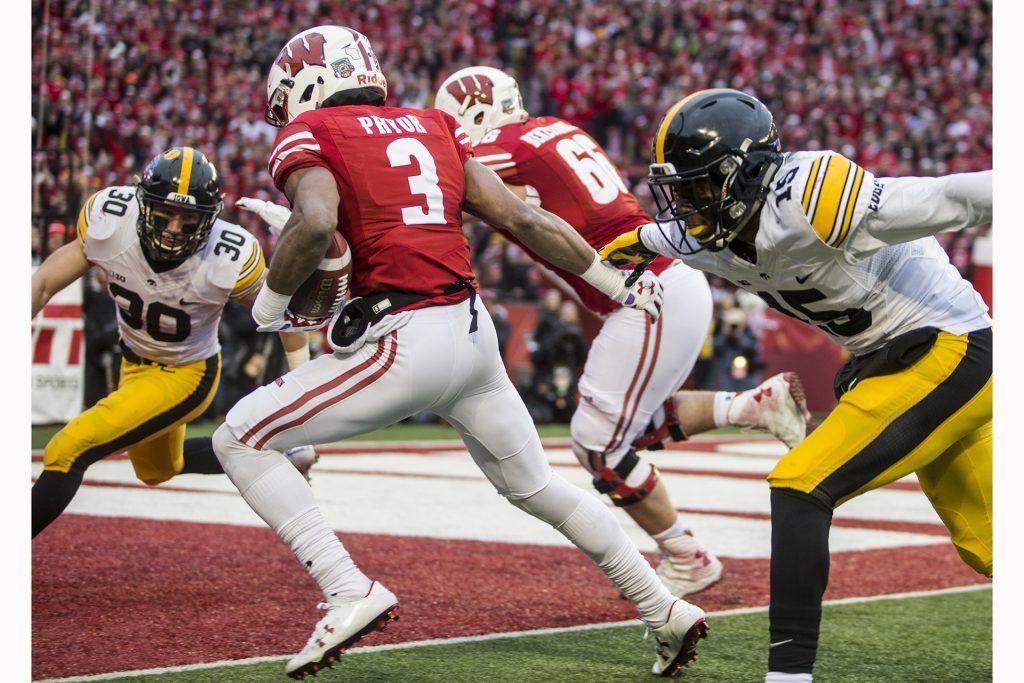When Kinnick Stadium is buzzing and the sounds of a college-football Saturday are abounding on Sept. 22, it is very possible the best team in the Big Ten could be running out of an infamous pink visiting locker room and onto a vicious green battlefield.
After falling a mere touchdown shy of achieving college-football-playoff glory, Wisconsin aches to get back to Indianapolis to secure the Big Ten title that so narrowly eluded it in 2017.
And the Badgers have the tools to do so.
When Wisconsin travels to Kinnick for the Big Ten opener, it will likely be undefeated following three nonconference matchups, against Western Kentucky, New Mexico, and BYU.
There’s little doubt whether Jonathan Taylor will be the man leading the way.
Taylor ran wild in his freshman season last year, rushing for 1,977 yards and 13 touchdowns, for an average of 6.6 yards per carry. To put that in perspective, he ran for more than 500 yards than the next best Big Ten back.
Of course, topping those numbers this season will be tough, but Taylor is also running behind arguably the biggest strength of any Wisconsin position group.
With only one offensive lineman departing, the Badgers can own the trenches with the number of veterans they have up front, plus numerous capable backups.
Along with a running game that is oozing with past production and future potential, the air attack seems to be in a good place.
Though prone to throwing interceptions, quarterback Alex Hornibrook (15 picks in 2017) is coming off one of his best performances of the season in the Badgers’ 34-24 win over Miami in the Orange Bowl.
Hornibrook kept the Turnover Chain off the field, throwing for 258 yards and 4 touchdowns without a pick in the victory.
Although its leading receiver, tight end Troy Fumagalli, is gone, Wisconsin has wideouts who can serve as playmakers, as long as injuries don’t play a role for the group again.
Despite missing the Badgers’ final five games with a leg injury, Quintez Cephus will likely serve as Hornibrook’s go-to target, while A.J. Taylor and Danny Davis III will play key roles as well.
Last season, the trio combined for 64 percent of Wisconsin’s receiving touchdowns and nearly 52 percent of its yards through the air. Remember, that is a group that doesn’t include the leading receiver from 2017.
Along with what is certainly a threatening offense, the Badgers had the conference’s best defense in 2017. Wisconsin held opponents to just 13.9 points a game last year, allowing only 18 touchdowns all season — nine fewer than the next best team.
Led by Butkus Award finalist T.J. Edwards and the linebacker group, the Badgers were fantastic against both the run and the pass.
Wisconsin’s schedule last year was considered one of the easiest in the conference by many; it avoided battles with Michigan State and Ohio State in the regular season.
This year, the Spartans and Buckeyes were left off the schedule once again, making the most difficult contests road games against Penn State and Michigan and the date with the Hawkeyes in the shadows of Kinnick.
While those games may not be easy, the Badgers — not lacking much on offense or defense — have the team many programs in the country would envy.



